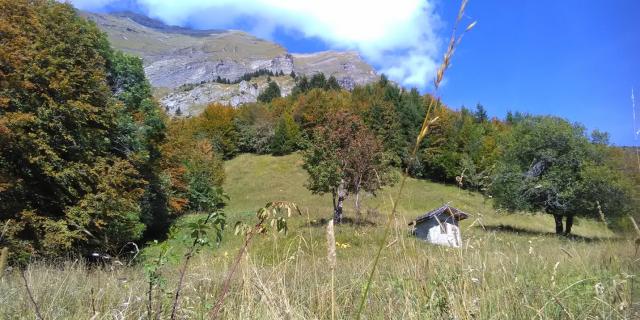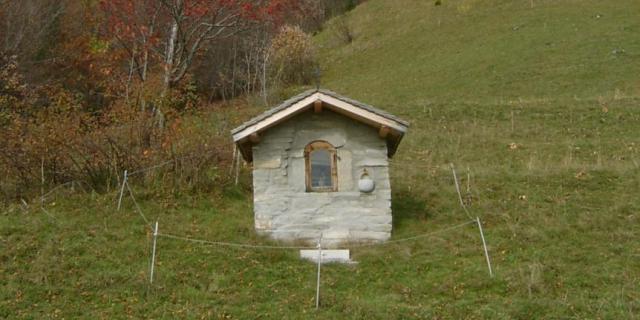




The oratory of the Clapières is built of cut stone and erected before the Revolution, above the niche is the date 1782.
Under the ridge purlin is indicated 1879, probably the date of the repair of the roof.
To the left is a small stoup carved from a round stone.
.
Under the revolution all oratories were to be razed by the municipalities.
The Oratory of Clapières escaped this because it was hidden under a pile of wood and branches.
It used to contain several statues of Holy Bishops carved in wood hence its other name
“The Chapel of the Wooden Saints.”



Our ancestors populated the sides of their roads with oratories and crosses (the commune has more than 30). These small monuments are an expression of religious faith and popular art. Moreover, these oratories, with their unique architecture, have their own charm. The statues that decorate the alcoves are often original: some were sculpted by the people of Gietto, others come from the old altarpiece of churches that were dispersed during the revolution.
In the past, Savoyards lived on a tight budget, and relied strongly on godsend in times of difficulty. They cherished multiple saints in order to protect themselves from epidemics, storms, avalanches, and crop pests. This is why our mountains are dotted with small oratories, sometimes in unusual places.